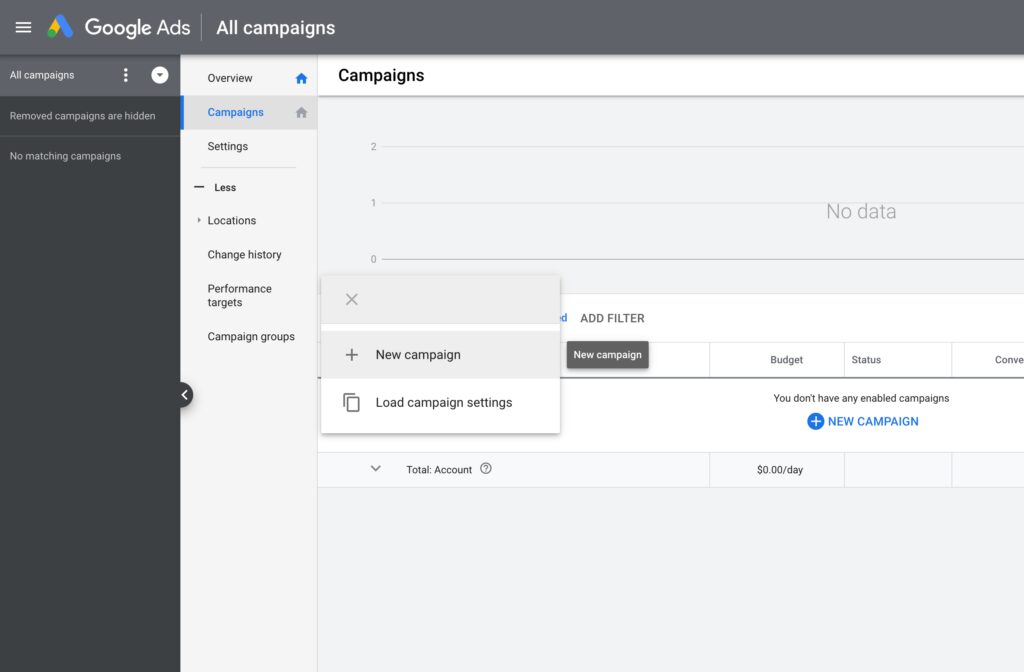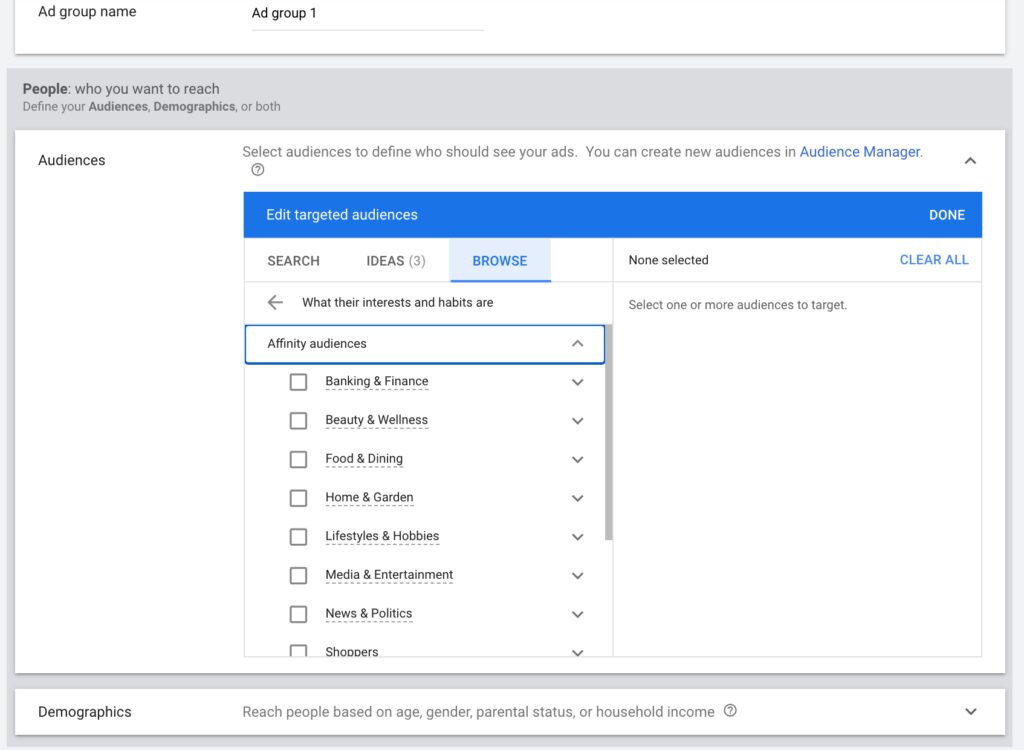Reaching the right customers with your ads is critical to improving conversions. While it’s possible that untargeted ads could catch the interest of online users, it’s far more likely that this aimless ad shots ad approach will result in a disconnect between dollars spent and revenue generated.
To ensure your ads are reaching the people in the right place, it’s worth leveraging a function in the Google Display Network (GDN) known as affinity audiences. Utilizing these audiences helps pinpoint customer segments that may be more likely to purchase your products, in turn driving more effective and beneficial ad spending.
Let’s imagine you run a car dealership business stand where you mostly advertise used cars. By leveraging affinity audiences to advertise your business, Google will display your ads to students for example who are on a budget, mechanics, car enthusiasts, and so on. By doing this, you will target people who already are interested in used cars.
Affinity audiences are especially beneficial for boosting brand awareness and for drawing new customers in. So, don’t expect large numbers of conversions since affinity audiences target impressions more than anything else.
In this article, I will walk through the best ways to leverage an affinity audience to draw in massive conversions in your digital marketing.
Table of Contents
ToggleWhat are Affinity Audiences?
People who have shown a liking for your product or service through their Internet behavior are your affinity audience.
Affinity Audience focuses on reaching out to prospective customers to build awareness about your brand. In a way, Affinity audience is much like running a TV ad for the audience with the only difference being here the ads are contextually relevant for the audience.
Let me explain a bit further. Affinity audiences should never be confused with custom affinity audiences as affinity audiences are displayed to prospective customers with similar interests to your business
These audiences are precisely generated by Google which pre-assigns users into group categories based on their online activity – habits, passions & lifestyle. Google then creates a dynamic target audience your ads can reach and profit from.
Custom Affinity Audiences, on the other hand, goes a step further allowing you to target your ads using free-form interest entered as keywords or you can precisely mention the URL’s as a proxy for interest bundles.
Different Affinity Audience Types
There are three key types of Affinity audiences that you can target with your segmentations:
#1. First-party
All first-party Affinity audiences can be narrowed down into 2 segments:
#1. CRM audiences: These live in CRM (customer relationship management) databases and are uploaded directly into some platforms for re-interaction, exclusions, and to build look-a-like lists as long as they are GDPR (General Data Protection Regulation) compliant of course.
#2. Website audiences: These are audience segments created from user engagement with your website. They can again be used to re-interact, exclude, or build look-a-like lists.
#2. Second-party
Second-party audiences, on the flip side, are created by the platform in use (e.g. Facebook or Google). Google has pre-built audience lists of users who have shown in-market interest in something (e.g., health insurance), as well as Google affinity audiences, e.g. car enthusiasts.
A Google custom audience can also be built based on websites freshly visited. Facebook also contains comprehensive targeting of its members, including age, relationship status demographic, interests, and education level. All of which can be used to generate custom affinity audiences for campaigns.
#3. Third-party
Third-party audiences are additional audiences that can be overlaid onto online platforms through a ‘third-party’. For instance, Experian’s Mosaic data segments can be accessed through Facebook and then targeted.
Additionally, TwentyCI’s users’ purchase habits can be accessed through Mastercard to build more custom affinity audiences.
Leveraging these affinity audience types is important for correct and successful campaign targeting.
How to set up Affinity Audiences
Affinity Audiences are profitable for all ad types, but Google suggests there is a specific value in using them for Display and Video campaigns tailored to address the awareness segment of the marketing funnel.
#1. Setting up an Affinity Audience is not an uphill task. Begin by creating a new campaign. Log in to your Google Ads account and choose Campaigns from the menu on the left of the screen. Then click the plus (+) button to start a new campaign.

That is so easy, you will agree?
#2. Done with that step, choose the goal of your campaign and the type of ad you wish to create. Is it a search, display, or another type of ad?
Select a campaign subgroup and click Continue to go further.

#3. Name your campaign, and set the location, budget, bidding, and language. Done with that, create an ad group

#4. Name your ad group and move to the “Audience” section. The audience section is where the audience stays.
Use the three tabs (Search, Ideas, and Browse) to choose your Affinity Audience. Select your audience from the list.

#5. At this stage, you may decide to shrink your scope by selecting a Subtype.
IMAGE
Using Affinity Audiences for top-of-funnel marketing
Starting at the top of the funnel with awareness tactics, a great way to fill your cookie pool is by leveraging affinity audiences.
These people haven’t yet shown intent for your specific product; however, in some way or another, they possess qualities of a potentially qualified consumer through their interests and recreations.
Tips For Getting Started With Affinity Audiences Across Each Of The Core Paid Platforms Google And Facebook.
Google Ads has lovely features that let you observe the performance of users in various affinity audiences before making any bid or budget changes. As such, you can go to town with the volume of various list combinations and analyze which does best for your marketing.
Once you figure out your best lists, you can set bid modifiers against that Google affinity audience to win the click for users you know is likely to convert.
The next stage is to then divide that audience into ad groups and change the copy to something more relevant to them. For instance, if the winning Google audience is a school, change your copy to be relevant to schools.
#1 First-Party Google Audiences
First-Party Google Audiences helps create richer first-party segments without the need to add additional pixels or tags to your websites or apps.
You can define audience segments based on how users engage with your site or app and what content they see.
Segments with a page view of 1 and no recency are added immediately, while others will take up to 48 hours.
With first-party segmentation, you can monetize your website or app more successfully by targeting campaigns to the highest-value user.
#2. Second-Party Google Audiences
Here, you should analyze which in-market and Google affinity audiences perform well against goals in analytics, and apply these in Ad campaigns.
Duplicate your affinity audiences by combining audience (e.g., household composition and lifestyle traits) that audience might have, such as topics for expectant mothers. For affluence, you could, for example, include in-market tips for trips to UAE.
#3.Third-Party Google Audiences
Whilst some third-party data and algorithms are obtainable to plug into Google Ads (e.g. Experian’s mosaic data), this is normally only used once first and second-party audiences, and their performances, have worn out.
#1. First-Party Facebook Audiences
To target your first-party Facebook audiences, you should make sure that Facebook Pixel is installed & collecting all conversion points, both soft and hard, for reporting and to be used later.
Follow this up by uploading any GDPR (General Data Protection Regulation) compliant data into the platform, such as all converters, converters of softer conversions (like brochure requests), converters from different geographic regions, and different types of customers.
#2. Second-Party Facebook Audiences
For second-party audiences, utilize Facebook’s detailed targeting system to narrow down each of your custom affinity audiences. You should build your personas and serve the relevant content to them so that the products or offerings shown are relevant.
#3. Third-Party Facebook Audiences
With third-party audiences, additional data can be overlaid into Facebook to allow extra targeting, but it will come with a data charge. So value needs to be analyzed, and first and second-party audiences should be exhausted first.
Once your audiences have been set, be sure to analyze them, report on them, and tailor the messaging so it’s relevant to them. Analyze them again to reap the bountiful performance rewards.
Would Targeting Affinity Segments Be Useful For You?
You should consider targeting affinity audiences if you are interested in broadening your target audience to users more likely to convert based on their interests. For instance:
#1. If your advertiser is a movie studio promoting the latest action flick, you could focus your market on the action movie lovers’ affinity audience.
#2. If your advertiser is a cosmetics company advertising a green line of makeup, you could focus on “women who love makeup”.
#3. If you are running a co-branded ad from a fast food company funding a car race, you could utilize affinity audiences to reach performance car fans.
With affinity audiences, you can link with target audiences that are consistent with the audiences you might buy for TV or offline campaigns.
Reaching a broad variety of relevant users is as simple as choosing a brand category and alternatively overlaying with demographics.
Users are allocated into audience segments for targeting third-party websites and apps based mainly on their activity on third-party websites and apps.
Users are allocated into audience segments for targeting Google’s products based mainly on their activity on these products.
Conclusion
Deliver marketing messages at the doorsteps of prospective customers who have taken a liking to your product already using affinity audience targeting options.
Affinity audiences are relevant to advertisers who are looking to raise awareness and drive consideration among affinity groups that have a strong interest in their products or service.
Add affinity audiences to your audience targeting today to reach people based on their specific interests as they browse pages across the web.








